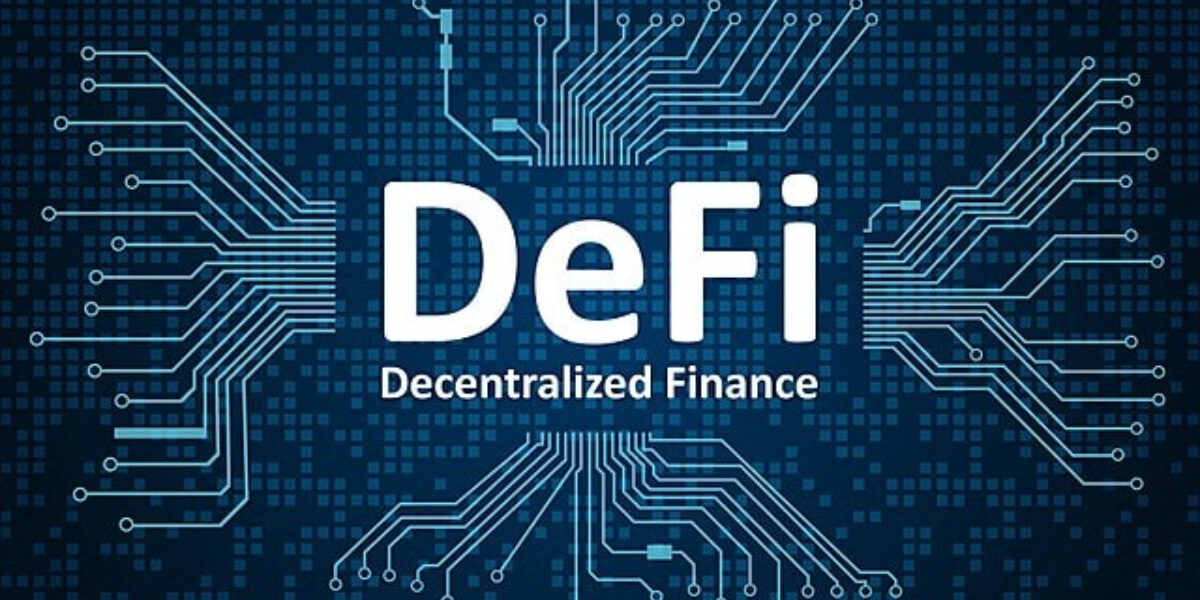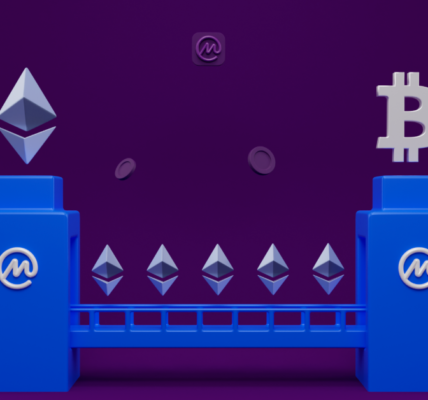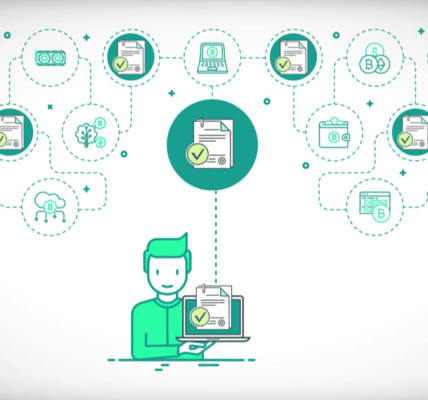Transparency is one of the cornerstones of the Decentralized Finance (DeFi) ecosystem. By design, DeFi aims to create a financial system that operates outside of the control of traditional financial institutions and intermediaries. One of the key ways DeFi achieves this goal is through transparency, which fosters trust, accountability, and accessibility for users. In an ecosystem where decentralization and trustlessness are central principles, transparency not only ensures that protocols can be audited but also helps mitigate the risks of fraud, manipulation, and exploitation.
In this article, we will explore why transparency matters in DeFi, how it helps build trust among users, and how it can continue to drive the growth and adoption of DeFi technologies.
The Role of Transparency in Decentralized Finance
At its core, transparency in DeFi refers to the openness of information about a protocol’s code, operations, and financial transactions. Unlike traditional finance, where much of the data is controlled by centralized institutions, DeFi protocols allow anyone with an internet connection to access and verify this information.
Key areas of transparency in DeFi include:
- Open-source code: Most DeFi protocols are built on open-source smart contracts. This means that anyone can inspect, audit, and contribute to the code, making it more secure and reducing the likelihood of hidden vulnerabilities.
- On-chain data: DeFi transactions are recorded on a public blockchain, which is visible and verifiable by anyone. This allows users to track the flow of funds, verify asset holdings, and monitor protocol performance in real-time.
- Governance processes: Many DeFi projects are governed by decentralized autonomous organizations (DAOs), where decisions are made through open voting by token holders. This ensures that no single entity can control the protocol or make decisions behind closed doors.
- Audits and reviews: Transparency extends to the auditing of smart contracts and security protocols. Reputable DeFi projects often publish the results of independent security audits, ensuring that their code is checked by external experts for vulnerabilities before it is deployed.
These elements of transparency serve a critical purpose: they allow users to trust the protocol and verify that it functions as advertised, without relying on intermediaries or third parties.
Building Trust Through Transparency
In the traditional financial system, trust is often established through regulatory oversight, financial institutions, and reputation. However, in DeFi, where there is no central authority, trust must be earned through transparency and accountability.
Transparency in DeFi helps build trust in several ways:
- Verification of Claims: DeFi projects often make claims about their protocol’s functionality, security, and performance. With transparent, publicly available code and data, users can independently verify these claims. For example, if a DeFi lending platform claims to offer high returns, users can check the smart contract to confirm the terms and conditions of the loan or investment.
- Increased Accountability: Transparency ensures that developers and projects are held accountable for their actions. If a protocol is not functioning as promised or is subject to a vulnerability, it is up to the community and auditors to identify and address the issue. This accountability incentivizes developers to prioritize security, efficiency, and fairness, knowing that their actions are visible to the public.
- Reduced Risk of Fraud: In a decentralized ecosystem, the risk of fraud can be significant, especially when users are interacting with unknown protocols or developers. Transparency mitigates this risk by allowing anyone to review the smart contract code and validate the legitimacy of a project. Without transparency, malicious actors could exploit vulnerabilities or engage in deceptive practices without detection.
- User Empowerment: Transparency empowers users by giving them the tools and information they need to make informed decisions. Users can review code audits, check transaction history, and assess protocol performance before committing funds. This reduces the dependency on centralized intermediaries, which are often opaque in their operations.
- Promotes Open Collaboration: Transparency fosters a collaborative environment within the DeFi space. Open-source code allows developers to contribute to projects, improving their functionality and security. By sharing knowledge and expertise, the DeFi community can create more innovative and secure solutions. Transparency also allows users to engage with projects, ask questions, and contribute to decision-making processes, especially in decentralized governance models.
How Transparency Helps DeFi Projects Gain User Confidence
As the DeFi space continues to evolve, user confidence is essential for the continued growth and adoption of decentralized finance. For DeFi projects, gaining and maintaining user trust is paramount. Transparency plays a crucial role in building that trust, especially given the novel and often complex nature of DeFi protocols.
- Reducing the Fear of the Unknown: DeFi can be intimidating to newcomers, particularly when they are unfamiliar with blockchain technology and smart contracts. By providing clear, accessible, and transparent information, DeFi projects can demystify their operations and make users feel more comfortable participating. Transparency in how funds are managed, how the protocol operates, and how risks are mitigated can reassure users and reduce skepticism.
- User Feedback and Engagement: Transparency enables users to engage with a DeFi project directly, whether through governance proposals, bug reports, or community discussions. This open communication can help build a sense of ownership and loyalty among users, who are more likely to trust a project when they feel their input is valued and considered.
- Attracting Institutional Investment: As DeFi grows, institutional investors are becoming more involved in the space. Transparency is critical for institutional investors, who need to ensure that projects meet rigorous standards of security, compliance, and risk management. By being transparent about their operations, DeFi projects can attract institutional capital and drive further growth in the ecosystem.
Examples of Transparency in DeFi Projects
Several leading DeFi projects have embraced transparency and reaped the benefits in terms of trust and adoption. Let’s look at a few examples of how transparency has been integrated into successful DeFi protocols:
- Uniswap: Uniswap, one of the most popular decentralized exchanges (DEX), is built on open-source code, meaning that anyone can inspect its smart contracts. Additionally, Uniswap publishes its governance proposals and results, allowing the community to have a say in the direction of the protocol. Uniswap’s transparency has helped it gain widespread adoption and trust among users.
- MakerDAO: MakerDAO, the decentralized lending platform behind DAI, has built transparency into its governance model. Every decision, from collateral requirements to risk parameters, is subject to a community vote. Furthermore, MakerDAO publishes comprehensive reports on its financial health and the status of its collateralized debt positions, providing users with the information they need to assess the protocol’s stability.
- Aave: Aave is another DeFi protocol that emphasizes transparency. The project regularly publishes detailed security audits and bug bounty programs, ensuring that its smart contracts undergo rigorous testing. Aave also allows users to view real-time data on asset lending and borrowing activity, which fosters transparency and trust.
Challenges to Achieving Full Transparency
While transparency is a critical component of DeFi, there are challenges to achieving complete transparency in every aspect of a protocol. Some of the main challenges include:
- Privacy Concerns: While transparency is essential for trust, there must also be a balance with user privacy. In some cases, exposing too much data could compromise user anonymity or reveal sensitive financial information. Striking the right balance between transparency and privacy is a complex issue that DeFi projects must navigate carefully.
- Complexity of Protocols: As DeFi protocols grow more sophisticated, it becomes harder for users to understand the underlying code and data. Even if the code is open-source and transparent, the complexity of smart contracts can be a barrier to understanding for non-technical users. Projects must work to make their transparency efforts user-friendly and accessible to a broader audience.
- Security Risks: While transparency allows for code review and auditing, it also exposes protocols to potential security risks. Hackers can exploit publicly available information to identify vulnerabilities and carry out attacks. DeFi projects must ensure that transparency does not come at the cost of security.
Conclusion
Transparency is a vital pillar of the DeFi ecosystem. It fosters trust, ensures accountability, and allows users to verify the functionality and legitimacy of protocols. As the DeFi space continues to grow, maintaining a high level of transparency will be essential for attracting new users, building confidence, and ensuring the long-term success of decentralized finance.
Through transparent governance, open-source code, and accessible on-chain data, DeFi projects can create a more trustworthy and secure financial system that empowers users and promotes innovation. While challenges remain, the commitment to transparency will continue to be a key driver of DeFi’s evolution and mainstream adoption.




